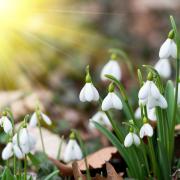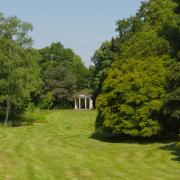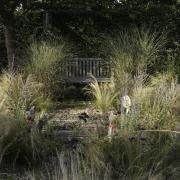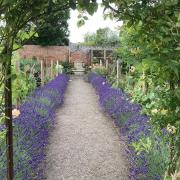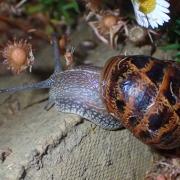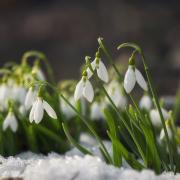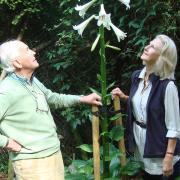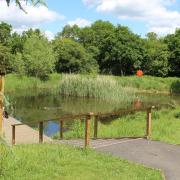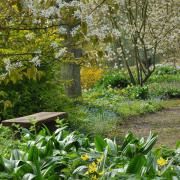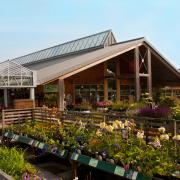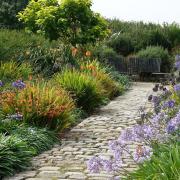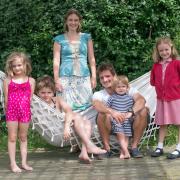From November through to March is the perfect time to plant bare root plants in your garden, so Philippa Pearson helps you find the best places in the county to purchase bare rooted plants and offers her tips on how to plant them
With spring on the horizon, we’re reaching the end of the season for buying and putting in bare root and rootballed plants in your garden. Whether you have been planning putting in new trees, a hedge, a rose border or you just simply want to add more perennials to your existing borders, this is the month to get on with that project before the stock of bare root plants is depleted and the weather gets warmer and drier.
Autumn and winter have traditionally been the main bare root planting seasons for generations of gardeners, as this was the only period in the year when new plants could be purchased, as bare root specimens are dug up when the plant is dormant from open ground. During the 1950s, container-grown plants started to become more widely available, leading to the developments of garden centres, and gave the gardener more time for planting as container-grown stock can be planted throughout the year.
However, there are huge benefits to planting between November and March. The soil is still warm, which gets roots off to a good start over the winter, and watering is less demanding than planting in spring or summer. Another very important factor is cost: a bare rooted or rootballed plant is quite a lot cheaper than buying one the same size as a container plant. You’ll need to get your site in the garden well prepared, ideally before your bare root plants arrive, as they will need to be planted straight away otherwise the exposed roots will quickly dry out. If you can’t plant immediately, heel plants into a patch of soil by digging a trench or hole then make sure the roots are covered with soil, although it’s best not to plant when the ground is frozen or waterlogged.
This is the best time of the year to plant hedges and King & Co at Rayne near Braintree has a great selection from native beech to hawthorn and holly, and all plants are grown in the UK. I like the mixed hedging packs that are available to suit different soil and site conditions. The Native Hedgerow Mix has plants with berries, colourful stems and blossom to add interest all year round, and is also great for birds — as is the Conservation Mix hedging pack which includes crab apple and dog roses. You’ll also find bare root mixed tree packs suitable for wet sites, windy sites and autumn colour interest.
Family-run firm, Glebe Farm Hedging based at Langham near Colchester, also has a super range of bare root hedging plants and young trees. Mixed packs include a Tapestry Hedge Mix of several species with similar growth patterns, but contrasting leaf tones and colours through the season. There is also a Fruit and Nut Hedge with different species producing edible fruit and nuts, plus a good range of woodland and hedgerow bare root trees.
Fruit trees and soft fruit are ideal bought as bare root plants and Ken Muir in Wheeley Heath has some unusual plants to try. Why not grow some black mulberry, cobnut, walnut, quince, medlar or sweet almond trees? They will add interest with their crops and many have lovely flowers, too. Supplement your soft fruit patch by growing different types of currants. As well as tasty black, red and white currants, Ken Muir has a pretty pink currant which is easy to grow and produces heavy crops of large, sweet and wonderfully fragrant pink currants from mid to late July. Or try a jostaberry which is a cross between a gooseberry and blackcurrant with large blackcurrant-like fruit, but sweeter. If you have sheltered sunny walls, try some peaches, nectarines or figs.
Roses have traditionally been planted during bare root season and Cants of Colchester, another family-run firm, has more than 245 years of rose-growing experience. Brothers Martin and Roger with their sister, Angela Pawsey, manage the company and are direct descendants of George Cant who established the nursery in 1765. During the early years, the nursery grew a wide collection of plants including azaleas, fuchsias, rhododendrons, peaches, apricots and the sweetest tomatoes in Colchester. In 1853, Ben Cant was introduced to some standard roses from France and so began Cants’ devotion to roses, which were becoming very popular at this time in English gardens. Today, Cants grows and supplies a range of modern varieties together with a selection of old shrub and species roses. Its aim is to grow and offer roses that will flourish happily ever after in gardens and source and trial many new roses that offer good disease resistance as well as giving a good show of flowers. With around 28,000 different roses available, there is plenty of choice for local gardeners.
Buy a bare-root plant
Trees and hedging
King & Co
The Tree Nursery
Dunmow Road
Rayne
Nr Braintree
Essex CM77 6WF
01376 340469
www.kingco.co.uk
Glebe Farm Hedging
Glebe Farm
Langham
Colchester CO4 5
01206 323200
www.hedge-plants.co.uk
Fruit trees and shrubs
Ken Muir
Honeypot Farm
Rectory Road
Weeley Heath
Clacton on Sea
Essex CO16 9BJ
01255 830181
www.kenmuir.co.uk
Roses
Cants of Colchester
Nayland Road
Mile End
Colchester
Essex
CO4 5HA
01206 844008
www.cantsroses.co.uk




